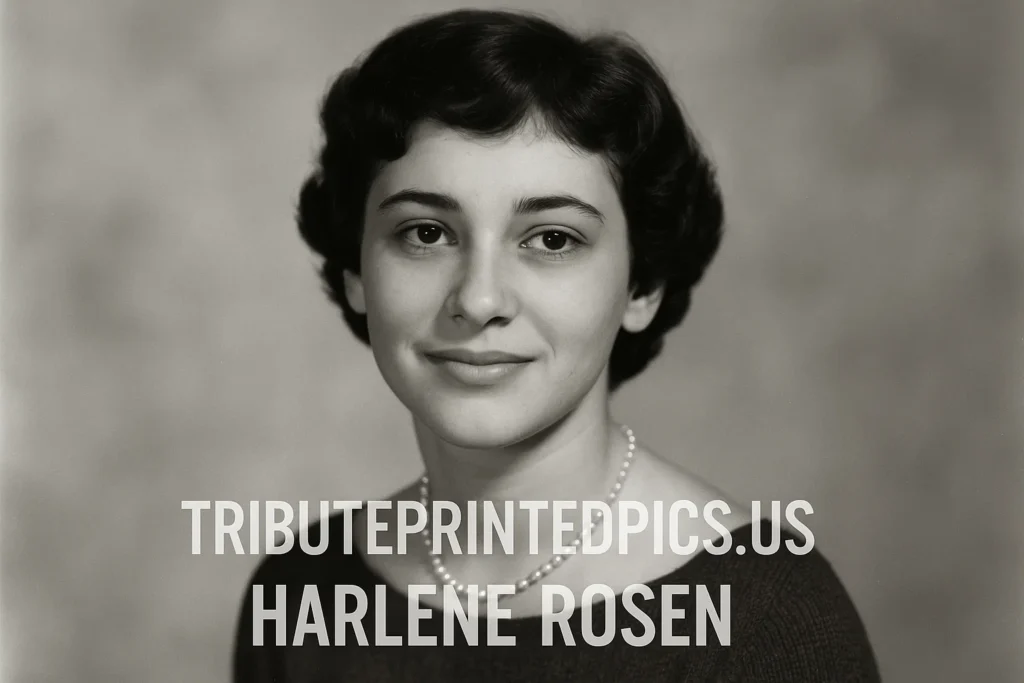Early Life and Background
Harlene Rosen was born in New York, where she grew up in a modest, cultured household. Her family valued education and music, which later shaped her interest in art and creativity. From a young age, Rosen displayed intelligence, grace, and curiosity about the world around her. She attended local schools, where she developed a passion for music and literature.
Her upbringing played a major role in shaping her outlook on life. Surrounded by a family that encouraged learning, she became thoughtful and sensitive—qualities that would later define her identity in the public eye. Her early experiences would also prepare her for the challenges she faced as she became known for being Woody Allen’s first wife.
| Full Name | Harlene Susan Rosen |
|---|---|
| Famous As | Woody Allen’s First Wife |
| Date of Birth | November 30, 1939 |
| Age (as of 2024) | 84 years |
| Place of Birth | United States |
| Nationality | American |
| Ethnicity | White |
| Profession | Pianist |
| Spouse | Woody Allen (1956–1962) |
| Parents | Julian and Judith Rosen |
| Sexuality | Straight |
| Hair Color | Blonde |
| Eye Color | Brown |
| Net Worth | Not publicly known |
| Marriage Details | Married in 1956 at age 16; Woody Allen was 19 |
| Divorce Details | Divorced in 1962; legal disputes followed regarding Allen’s jokes about her |
| Reconciliation | In 2015, she publicly sent a message of reconciliation on Allen’s 80th birthday |
| Life After Divorce | Attended college, later lived in California, and was widowed |
| Public Presence | Limited; known mostly through Woody Allen’s biographies |
Teenage Marriage to Woody Allen
Harlene Rosen met Woody Allen when she was still in her teenage years. Allen, an emerging comedian at the time, was already showing signs of his unique humor and intellectual wit. Their connection was instant—based on shared interests in creativity and thought. They married when Rosen was only 17 years old, and Allen was in his early twenties.
This teenage marriage was quite unconventional for its time, yet it reflected the romantic impulsiveness of youth. Their union quickly drew attention, as the 1950s celebrity relationships often did. Many saw them as an artistic pair trying to balance love and ambition in a rapidly changing entertainment world.
The Marriage and Divorce Phase
Their marriage began with affection and optimism, but the pressures of fame soon cast a shadow. As Woody Allen’s career began to rise, the gap between their worlds widened. Allen’s commitment to his work, coupled with public attention, created distance in their relationship.
The marriage lasted for a few years before tension and misunderstandings led to separation. The couple eventually filed for divorce, ending what had been one of the most talked-about young marriages of its time. This chapter marked not only a personal loss for Rosen but also a defining moment in Woody Allen’s early life and career beginnings.
Relationship Challenges and Public Scrutiny
The relationship between Harlene Rosen and Woody Allen faced many challenges, primarily because of their age difference and different ambitions. Rosen wanted a balanced life, while Allen’s growing fame made privacy almost impossible. Public scrutiny became relentless, and every detail of their life was discussed in tabloids.
- Media attention caused emotional distress
- Gossip exaggerated their disagreements
- Their youth made it difficult to handle fame
- Emotional and creative incompatibility led to conflicts
This phase was one of the hardest in Rosen’s life, forcing her to navigate the tension between love and public pressure.
Legal Battles and Defamation Lawsuit
After their divorce, Harlene Rosen became entangled in one of the most publicized legal battles involving Woody Allen. She filed a defamation lawsuit against the comedian following comments he made about her on NBC. This lawsuit became a topic of national conversation, reflecting how private pain often turns into public drama for celebrities.
The NBC lawsuit revealed the complex dynamics of their post-marriage relationship. Rosen’s stand in the courtroom demonstrated her courage to defend her dignity against public humiliation. The legal case eventually settled, marking a quiet end to one of the earliest controversies in Allen’s career.
Public Humiliation and Media Portrayal
Media outlets often portrayed Rosen as the scorned ex-wife rather than an independent woman with her own story. She endured public humiliation as tabloids sensationalized her experiences. During the 1950s, the press often reduced women in celebrity marriages to supporting characters, overshadowing their individuality.
This media narrative distorted Rosen’s true character. Despite being portrayed unfairly, she maintained her composure and stayed away from the spotlight. Her response showed remarkable privacy and resilience, which became part of her enduring legacy.
The Life of an American Pianist
Few people know that Rosen was also an American pianist with a genuine passion for music. Her early life was deeply influenced by classical training, and she often performed privately for close friends and family. Although she never pursued a professional career in music, her artistic soul remained alive through her piano sessions.
Music served as her refuge from personal struggles. Playing piano helped her cope with stress and reflect on her journey. It was a reminder that even amidst chaos, art could bring peace.
Separation and Settlement
The separation between Rosen and Allen was not just emotional but also legal and financial. After years of tension and disputes, they reached a settlement that allowed both to move on. The separation marked the end of their direct association but did not erase the public’s curiosity about their short-lived marriage.
Their settlement symbolized the closure of a young love that had turned into a cautionary tale about fame and relationships. It also highlighted the emotional maturity Rosen gained through hardship and introspection.
Personal Struggles and Privacy
After her separation, Harlene Rosen chose a life away from Hollywood. She focused on rebuilding herself and maintaining her privacy. Unlike many celebrity ex-wives, she didn’t chase publicity or attempt to capitalize on her connection to a famous name.
Her decision to remain private reflected her strength. She valued peace over fame, learning from past experiences that personal contentment mattered more than public recognition. This approach helped her preserve her dignity throughout her later years.
Life After Divorce
Life after divorce brought Harlene Rosen a sense of independence. She continued her musical pursuits and invested her time in personal development. While details about her later life remain limited, those close to her describe her as a compassionate and thoughtful person who valued relationships over material success.
This phase of her life showed her resilience. Despite early fame and hardship, she maintained balance and optimism, focusing on meaningful living instead of reliving the past.
Legacy and Reflection
Harlene Rosen’s story is a reflection of how personal strength can outlast public scandal. Her life reminds us that behind every famous personality, there’s often another story that remains untold. She may have been known as Woody Allen’s first wife, but her real legacy lies in her courage, resilience, and quiet dignity.
Her journey from a teenage marriage to self-discovery mirrors the experiences of many women who rise above public scrutiny to reclaim their identity. Harlene Rosen’s life continues to resonate as an inspiring example of endurance and grace.
Table: Key Life Events of Harlene Rosen
| Year | Event | Description |
|---|---|---|
| 1950s | Marriage to Woody Allen | Married at age 17, marking a teenage marriage during the 1950s celebrity relationships era. |
| 1960s | Divorce | Separated after years of relationship challenges and public scrutiny. |
| 1970s | Defamation lawsuit | Filed a lawsuit against Woody Allen for public remarks made on NBC. |
| Later years | Private life | Chose a low-profile life, focusing on music and personal peace. |
Conclusion
Harlene Rosen’s journey is not just a tale of love and heartbreak but also of resilience and dignity. Her ability to rise above public humiliation and focus on personal growth sets her apart as a woman of strength. While she is often remembered through her association with Woody Allen, her true essence lies in her perseverance and wisdom. Her life teaches us that identity and peace can be reclaimed even after fame’s harsh spotlight fades.
FAQs
1. Who is Harlene Rosen?
Harlene Rosen is known as Woody Allen’s first wife and an American pianist who maintained a private life after their divorce.
2. When did Harlene Rosen marry Woody Allen?
She married him in the 1950s when she was only 17, marking one of the earliest celebrity relationships of that decade.
3. What was the reason behind their divorce?
Their marriage ended due to personal differences, public pressure, and the challenges of balancing a private relationship with fame.
4. Did Harlene Rosen ever remarry?
There’s limited information about her remarriage, as she chose to live a private life after her separation.
5. What is Harlene Rosen’s legacy?
Her legacy lies in her resilience, dignity, and ability to maintain privacy despite being part of one of Hollywood’s most discussed marriages.


